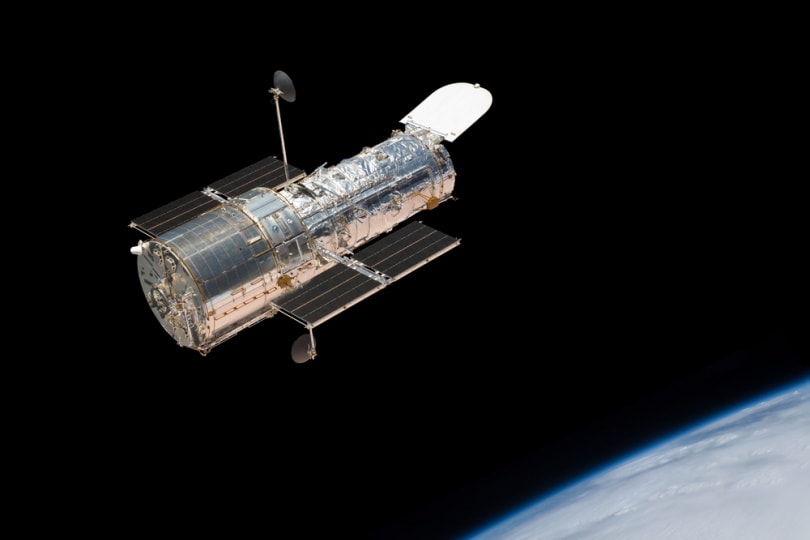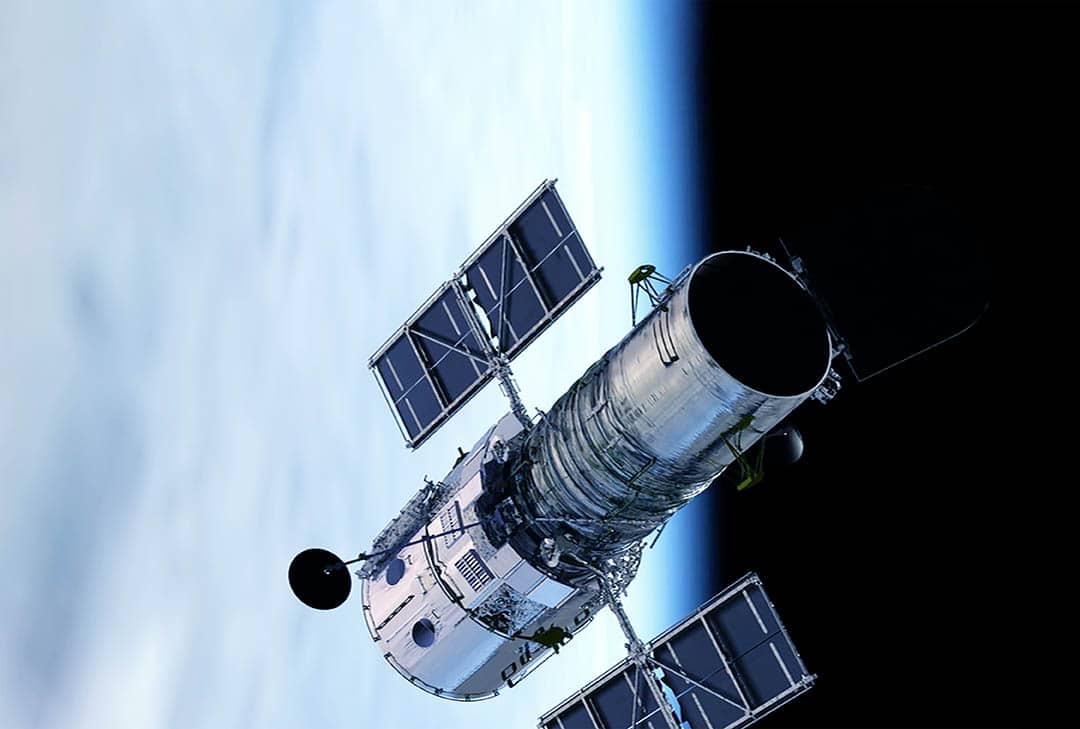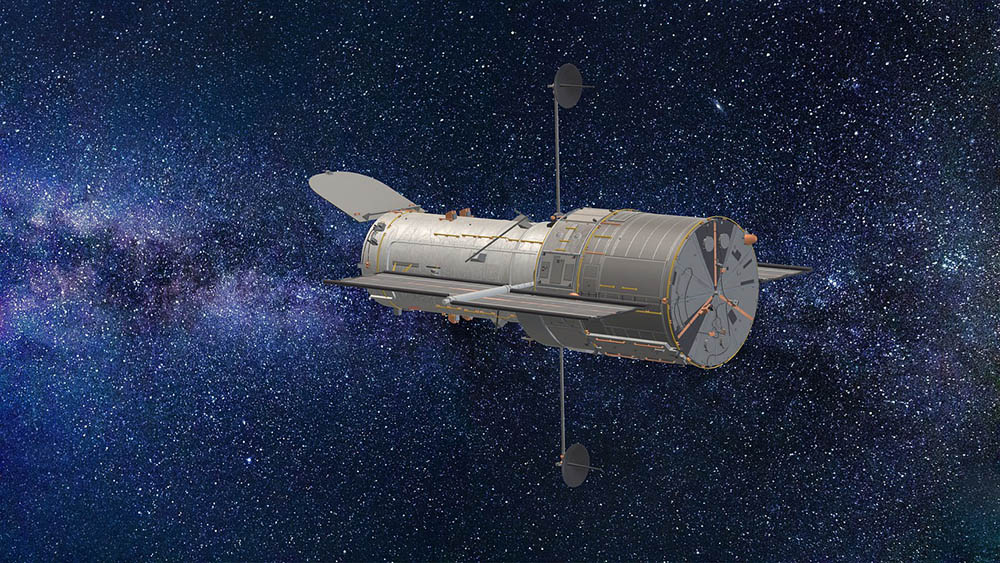How Far Can the Hubble Telescope See?
Last Updated on

The Hubble Space Telescope was designed to observe the universe with a degree of detail that scientists would not have been able to achieve using telescopes on Earth. The space telescope has been able to capture objects over 10 billion light-years in distance. In March 2016, NASA announced that the Hubble Space Telescope broke the cosmic distance record by observing the farthest object in the universe yet, the GN-z11 galaxy, some 13.4 billion light-years away.
Since being launched into orbit back in April 1990, NASA’s Hubble Space Telescope has captured hugely fascinating and useful data, enabling scientists to observe and learn about our universe’s past. In this article, we will look at the Hubble Telescope in a little more detail and give you a breakdown of some of this loyal telescope’s greatest discoveries.

How Does the Hubble Telescope See So Far?
The solar-powered space telescope captures ultraviolet, visible, and near-infrared light waves, and altogether collects 40,000 times more light than the human eye is capable of. Because the Earth’s atmosphere absorbs ultraviolet rays, the same data can’t be collected by a telescope on Earth.
Several scientific instruments, both former and current, have enabled the Hubble telescope to see as far as it does. This orbiting observatory has had several maintenance visits by astronauts over the years to replace instruments with upgrades and to carry out repairs.

Is Hubble an Optical Telescope?
The Hubble Space Telescope is an optical telescope—a Cassegrain reflector telescope, designed to create a telephoto effect, and therefore, has a very long focal length.
When light enters through the opening of the telescope, it bounces off the primary, then the secondary mirrors, before returning to a focal point. At this stage, smaller mirrors reflect the light onto the sensors of various scientific instruments. This data is then translated into the iconic images of the universe that the Hubble telescope is renowned for.
Who Was the Hubble Telescope Named After?
The Hubble Space Telescope is named after an American astronomer named Edwin Hubble, who is credited with the discovery and confirmation of the existence of galaxies beyond the Milky Way. He also gave evidence for what is now known as Hubble’s Law, the first observation of the expansion of the universe.
Where Is Hubble Now?
Hubble is currently 340 miles above the Earth’s surface, making 15 full orbits of our planet every day. It takes around 95 minutes for the Hubble to make one full Earth orbit. The trusty space telescope has provided vital data to scientists for over 30 years and continues to do so now, still making discoveries regularly.
Incredibly, the Hubble Space Telescope has made more than 1.3 million observations over its lifetime.

Can the Hubble Telescope See Other Planets?
As well as observing distant galaxies, effectively peering back in time to when the universe was only 500 million old, the Hubble Space Telescope has also been used to take a closer look at planets in our solar system, their moons, and exoplanets, aiding scientists’ search for planets that may be habitable.
Scientists have long believed that there may be oceans beneath Europa’s icy surface, and in 2016, Hubble observed what astronomers believe were water vapor plumes erupting out from the Jovian moon.
In 2019, Hubble detected water vapor on an exoplanet dubbed K2-18b, that orbits its dwarf sun within a habitable zone.
Will There Be a New Hubble?
The Hubble Space Telescope will remain fully operational and in Earth’s orbit for years to come. Scientists will continue to benefit from data gathered by the telescope. NASA hope that the Hubble will last several more years, perhaps even until 2030, 2040, or beyond.
However, an international collaborative team consisting of scientists from NASA, ESA, and CSA, have developed the James Webb Space Telescope, which was launched into orbit in 2021. The James Webb Space Telescope, or JWST, will be the modern and primary observatory for astronomers worldwide. JWST is fitted with innovative and new technologies and is also the most powerful telescope sent to space. Scientists hope that JWST will be able to observe images deemed too faint even for the Hubble Space Telescope.
With JWST, scientists hope they will be able to glimpse into an even more distant past, where they will observe the first stars and the formation of the first galaxies in the universe.

What Are Some of the Hubble Space Telescopes Greatest Discoveries?
- Hubble has observed the birth of stars. Using its infrared detectors, it imaged large plumes and pillars of gas and dust, which are so-called stellar nurseries. One of the most iconic images from the Hubble Space Telescope, “Pillars of Creation,” is of a stellar nursery.
- By observing gravitational lensing—distortion caused by gravity—which is visible in the images taken by the Hubble Space Telescope, astronomers have been able to discover and map areas of dark
- The deeper the Hubble gazes into the universe, the farther into the past. This has allowed it to observe the development of galaxies over time. The most distant, and therefore the galaxies less formed, were smaller and irregular in shape compared to the iconic spiral and disk-shaped galaxies.
- Spectacular images taken by the Hubble of the death of stars shine a light on the intricate subtleties of the process a star goes through before turning into a white dwarf. Further images show supernovas and reveal pulsars at the center of nebulas.


Conclusion
The furthest object that the Hubble Space Telescope has so far observed was 13.4 billion light-years away. However, due to the expansion of the universe, and the time it takes for light to travel, the galaxy, dubbed GN-z11, is currently estimated to be around 32 billion light-years away.
The Hubble Space Telescope was designed to have a lifespan of around 15 years, and yet it has continued to provide incredible imagery for over 30 years, contributing to new discoveries and inspiring astronomers worldwide.
Featured Image Credit By MarcelClemens, Shutterstock
About the Author Cheryl Regan
Cheryl is a freelance content and copywriter from the United Kingdom. Her interests include hiking and amateur astronomy but focuses her writing on gardening and photography. If she isn't writing she can be found curled up with a coffee and her pet cat.
Related Articles:
How to Clean a Refractor Telescope: Step-by-Step Guide
How to Clean a Telescope Eyepiece: Step-by-Step Guide
Can You Use Binoculars to Look At Stars? How to Choose the Right Pair
15 Crucial Facts About Ultraviolet Rays & the Sun
What Constellation Is Spica In? The Interesting Answer!
10 Interesting Leo Constellation Facts, Myths, and FAQs
15 Interesting Pegasus Constellation Facts, Myths, and FAQs
6 Interesting Sagittarius Constellation Facts, Myths, and FAQs in 2024!
